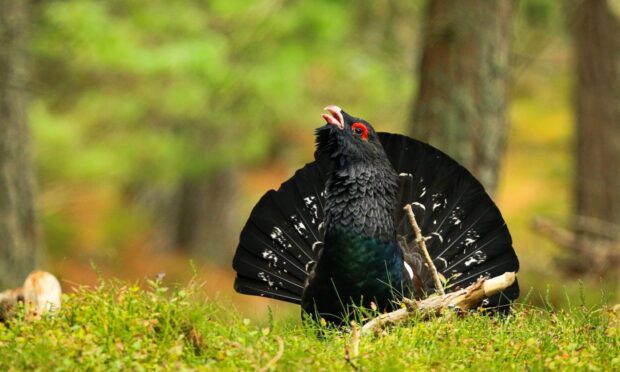The Game and Wildlife Conservation Trust has warned that urgent action needs to be taken to protect Scotland’s largest grouse – the iconic Capercaillie.
Having originally inhabited the sprawling Caledonian Forest, the species is now under threat as more of the forest is cut back.
It now lives in fragments of land occupied by the native Caledonian pine trees, with a sharp decline due to chick death, more common in Scotland than in Europe.
Last month, the Game and Wildlife Conservation Trust (GWCT) completed its 33rd consecutive year of capercaillie brood surveys.
The data show a continued decline in breeding success over time over 30 years from when the survey first commenced in 1991.
At that time, capercaillie numbered approximately 2,200 birds, spread from Argyll and Perthshire to the south and west, Aberdeenshire in the east and Ross-shire in the north.
Now it is believed that only 300 to 400 birds remain, with 90% confined to one area of Strathspey.
Capercaillie could be extinct within the next 30 to 50 years
Capercaillies usually have better breeding success during June when the weather is dry and warm.
This year only an average 0.4 chicks fledged per bird, which is below the 0.6 needed to maintain the population and is the fifth consecutive year resulting in population decline.
David Baines, GWCT’s Head of Upland Research, said: “The end is nigh for capercaillie unless we quickly turn around the low chick survival.
“Pine martens have increased in recent decades and are known to consume capercaillie eggs and chicks.
“Their licensed removal from key capercaillie strongholds is urgently required to help avoid species extinction.”
Will Anderson, chief executive of Seafield and Strathspey Estates, who hosted this year’s survey, said: “We have been managing and extending our forests to benefit capercaillie for over 30 years and it would appear that neither habitat extent nor quality is limiting their numbers.
“We are concerned that in a year where weather is also unlikely to be a limiting factor, we have such poor brood numbers.”
Despite well-intentioned conservation programmes to improve capercaillie habitat, extinction seems likely within the next 30 to 50 years.

Conversation